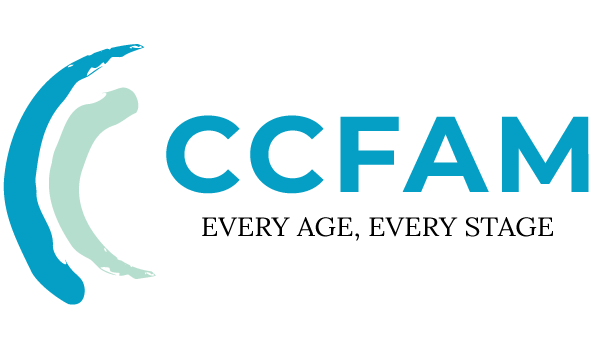01 Jun Sibling Play Therapy vs. Individual Play Therapy
When addressing childhood emotional and behavioral needs, play therapy offers multiple, developmentally grounded pathways. Unlike traditional talk therapy, evidence-based play modalities—such as sibling play therapy and individual play therapy—draw on developmental neuroscience principles (see Journal of Child Psychology, 2023) to help children express thoughts and feelings that are difficult to put into words. This guide compares APT-approved methods, outlining common DSM-5-TR applications from sibling rivalry to pediatric PTSD and offering practical guidance for selecting the right format.
How does sibling play therapy differ from individual approaches?
Sibling play therapy targets dyadic relationship patterns and family interaction dynamics through structured co-play interventions. While individual play therapy focuses primarily on a child’s intrapsychic processes (internal coping, regulation, and trauma processing), sibling sessions work directly on relationship repair, communication, and mutual understanding. Typical sibling-based, attachment-informed activities include:
- Joint narrative storytelling to reveal and reframe family role perceptions
- Cooperative sandtray construction to build a shared symbolic language and problem-solve together
- Mirroring exercises to strengthen emotional attunement and empathic responding
For example, a 2022 study in the American Journal of Family Therapy reported that siblings who completed sibling-focused play interventions experienced approximately 42% fewer conflict episodes than those in control groups.
Neurodevelopmental benefits of sibling play therapy
Clinical and laboratory research suggests several neurodevelopmental benefits from cooperative and attachment-based sibling play:
- Increased oxytocin release during cooperative play, supporting bonding and reduced stress
- Improved prefrontal cortex connectivity associated with turn-taking and self-regulation games
- Promotion of secure attachment when filial therapy techniques are adapted for sibling dyads
These outcomes are most likely when play activities are structured, developmentally appropriate, and guided by clinicians trained in attachment-informed methods.
When should parents consider individual play therapy instead?
Individual play therapy is often the best option when the clinical focus is on a child’s internal distress, trauma processing, or when one child needs a safe, one-to-one setting to develop coping skills. The table below summarizes common clinical indications, recommended play modalities, and examples of supporting evidence or clinical guidelines.
| Condition | Therapeutic play modality | Evidence base / guidance |
|---|---|---|
| Trauma processing | Trauma-Focused Cognitive Behavioral play techniques | NCTSN clinical guidelines |
| Selective mutism | Child-Centered Play Therapy (CCPT) and gradual exposure within play | Research compiled by APA Division 53 and specialty journals (APA Division 53) |
| ADHD symptom management | Directive play with sensory supports and behavioral scaffolding | Protocols informed by ADHD organizations and clinical practice (see CHADD) |
Individual sessions allow clinicians to tailor interventions to a child’s unique neurodevelopmental profile and to sequence play activities in a neurosequential manner (from regulation to relational to reflective skills) for more targeted coping-skill development.
How does group play therapy bridge both approaches?
Group play therapy—often certified through the Association for Play Therapy (APT)—combines relational and individual benefits. Groups provide:
- Social mirroring opportunities that are not available in one-to-one therapy
- Peer modeling of emotional regulation and social problem-solving
- Cost-effective delivery particularly useful for school-based or community programs
For instance, a 2023 study in School Psychology Review found that programs integrating sibling play techniques with social-emotional learning (SEL) components were associated with a 37% reduction in reported bullying incidents.
What diagnostic tools guide play therapy selection?
Licensed and credentialed play therapists (e.g., Registered Play Therapists, RPT) typically use a combination of observational and standardized tools to determine the most appropriate format:
- Marschak Interaction Method (MIM) for assessing sibling dyad interaction patterns
- BASC-3 behavioral assessments to evaluate individual emotional and behavioral functioning
- Structured play therapy observation checklists aligned with DSM-5-TR criteria to document symptom patterns and treatment response
These assessment tools inform treatment planning, goal setting, and decisions about whether sibling, individual, or group formats will best meet therapeutic objectives.
FAQs: Navigating play therapy options
1. What is the ideal age range for sibling play therapy?
Sibling play therapy is often most effective between 4 and 10 years—when theory of mind and peer perspective-taking are rapidly developing (see Yale Child Study Center). Adolescents can also benefit from sibling-focused work when activities are adapted toward expressive arts, family systems work, or mediated communication exercises. Yale Child Study Center
2. How long until observable behavioral changes emerge?
Short-term protocols (about 12–16 weekly sessions) frequently produce measurable improvements in externalizing behaviors and sibling conflict. Trauma-focused work is often longer and more individualized; many trauma protocols recommend a minimum of several months, and complex cases may require 6+ months of consistent therapy (see Journal of Traumatic Stress, 2023).
3. Does insurance cover these play therapies?
Coverage varies by plan and provider. Many ACA-compliant plans reimburse psychotherapy when delivered by licensed clinicians (e.g., LPC, LCSW) under standard CPT codes such as 90837 for longer psychotherapy sessions; parents should verify coverage details, prior authorization requirements, and in-network provider options with their insurer.
Conclusion: Matching play therapy modalities to child needs
Choosing between sibling play therapy, individual play therapy, or group formats requires a clear understanding of developmental psychopathology and family system dynamics. Sibling interventions are particularly useful for repairing attachment ruptures and improving dyadic functioning; individual therapy is best for intrapsychic distress and targeted trauma work; and group approaches build social competence and peer-based regulation. For personalized recommendations, consult APT-certified professionals through the Association for Play Therapy (A4PT) or a licensed child mental health clinician.
References
- Psychology Today: Evidence-Based Play Therapy
- APT Clinical Practice Guidelines
- Journal of Child and Family Studies (2023) on sibling therapy outcomes
- Journal of Traumatic Stress (2023) on trauma treatment timelines



Sorry, the comment form is closed at this time.